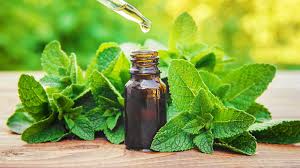Massage therapy has long been known for its ability to relieve tension, improve circulation, and promote relaxation. When combined with essential oils, the benefits are amplified, providing deeper healing for the body and mind. Essential oils are not just about pleasant scents—they have powerful therapeutic properties that can enhance your massage experience in incredible ways.
How Essential Oils Work
When inhaled, fragrances travel through the olfactory nerves, sending signals to various parts of the brain, including the limbic system. This system is responsible for emotions, memory, heart rate, and stress levels, making scent a powerful tool for relaxation and healing. Some theories suggest that different essential oils carry unique vibrational properties, which contribute to the way we perceive and respond to their aromas.
When applied topically, essential oils penetrate the skin and can enter the bloodstream, traveling to tissues and muscles. Their lipid-soluble structure allows for quick absorption, meaning they can start working within minutes. To enhance penetration, essential oils are often combined with carrier oils, helping them stay on the skin longer and allowing for deeper absorption.
Essential Oils That Complement Massage
Certain essential oils work exceptionally well in massage therapy, offering benefits such as muscle relaxation, reduced inflammation, improved circulation, and emotional balance. Here are some of the most effective oils to incorporate into your next massage session:

Lavender
Lavender is a powerhouse when it comes to relaxation. It calms the nervous system, helping to ease stress, anxiety, and muscle tension. If you’ve ever noticed your muscles tightening when you’re nervous or stressed, lavender can assist in releasing that tension. It’s also been known to promote tissue regeneration and wound healing. In fact, a French scientist named René Gattefossé discovered lavender’s healing properties after using it on a burn from a lab explosion.

Frankincense
Frankincense is widely used for its ability to relieve joint and muscle pain. It has anti-inflammatory properties that help relax muscles while also improving mood and emotional balance.

Peppermint
Peppermint has natural cooling properties that make it excellent for reducing inflammation, especially in sore or overworked muscles. It is also beneficial for various skin conditions, including itchy skin, varicose veins, eczema, and psoriasis. Additionally, peppermint is known to relieve headaches.

Lemongrass
Lemongrass has antifungal, antibacterial, and anti-inflammatory properties, making it a great choice for muscle recovery and pain relief. It also aids in connective tissue regeneration, improves circulation, and promotes lymphatic flow. This makes it particularly useful for digestion issues, torn ligaments or muscles, and varicose veins.

Copaiba
Traditionally used by healers and curanderos in the Amazon, copaiba resin is known for its potent anti-inflammatory properties. It is effective for both internal and external pain relief, particularly for arthritis, rheumatoid conditions, psoriasis, and anxiety.
Enhancing Your Massage Experience
Using essential oils during a massage not only deepens relaxation but also enhances the body’s natural healing process. Whether you are looking to ease muscle tension, reduce inflammation, or promote emotional well-being, there is an essential oil that can support your needs.
If you’re interested in incorporating essential oils into your massage therapy sessions, be sure to choose high-quality, pure oils and mix them with a carrier oil for optimal absorption.
Have you tried essential oils in your massage routine? Which ones are your favorites? Share your experience in the comments below!
Resources:
ABMP(Asscociated Bodywork and Massage Professionals) – Continuing Education
Aura Cacia Home page | Aura Cacia
Essential Oils Desk Reference Book by Life Science Publishing
Leave a Reply